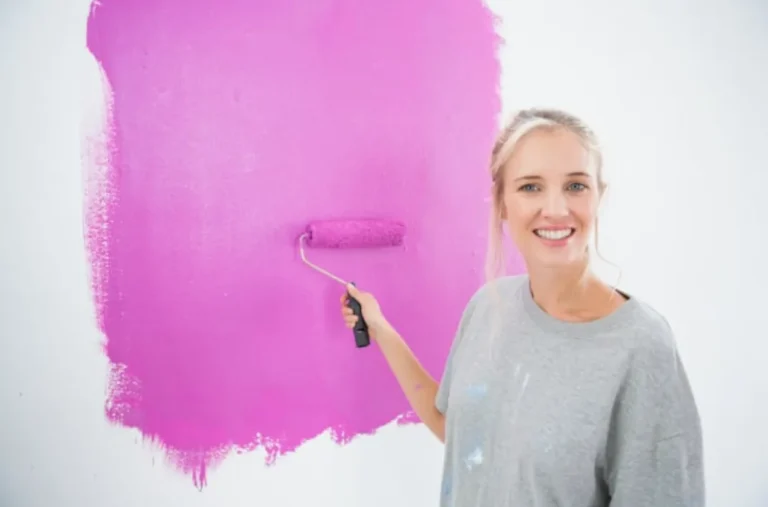Step-by-Step Guide to Painting Your Home’s Interior Like a Pro
Painting the interior of your home is one of the most cost-effective ways to refresh your space, add personality, and increase the value of your property. While it may seem like a straightforward task, achieving a professional-looking finish requires careful planning, preparation, and attention to detail. Whether you’re a seasoned DIY enthusiast or a novice painter, this step-by-step guide will help you paint your home’s interior like a pro.
1. Choose the Right Paint and Tools
Before you begin, selecting the right paint and tools is crucial for achieving a high-quality finish.
Types of Paint:
- Flat/Matte: Best for low-traffic areas like bedrooms and ceilings. It hides imperfections but can be difficult to clean.
- Eggshell: Slightly more durable than flat, with a subtle sheen. Ideal for living rooms and dining rooms.
- Satin: A versatile finish that works well in most areas, including kitchens, bathrooms, and hallways. It’s easy to clean and resistant to moisture.
- Semi-Gloss: Highly durable and moisture-resistant, making it perfect for trim, doors, and high-traffic areas.
- Gloss: The most durable and shiny finish, often used for trim, doors, and cabinets.
Tools You’ll Need:
- Paint rollers and roller covers (choose the nap length based on your wall texture)
- Paintbrushes (angled brushes for cutting in and flat brushes for trim)
- Painter’s tape
- Drop cloths or plastic sheeting
- Paint trays and liners
- Sandpaper (120- to 220-grit)
- Spackle or putty for patching holes
- Putty knife
- Stir sticks
- Ladder or step stool
- Paint edger (optional for precise edges)
2. Prepare the Room
Proper preparation is key to a professional-looking paint job. Taking the time to prep your space will save you headaches and ensure a flawless finish.
Clear the Space:
- Remove all furniture, or move it to the center of the room and cover it with drop cloths.
- Take down any wall hangings, curtains, and outlet covers.
- Remove or cover light fixtures.
Clean the Walls:
- Wipe down the walls with a damp cloth to remove dust and grime. For kitchens and bathrooms, use a mild detergent to clean grease or residue.
Repair and Sand:
- Inspect the walls for cracks, holes, or imperfections. Use spackle or putty to fill in any holes, and sand them smooth once dry.
- Lightly sand glossy surfaces to ensure better paint adhesion. Wipe away the dust with a damp cloth.
Protect Surfaces:
- Use painter’s tape to mask off areas you don’t want to paint, such as baseboards, trim, windows, and door frames.
- Cover the floors with drop cloths or plastic sheeting to protect them from paint splatters.
3. Prime the Walls
Priming is an essential step, especially if you’re painting over dark colors, stains, or new drywall. Primer helps paint adhere better, provides a uniform base, and can enhance the vibrancy of the paint color.
When to Use Primer:
- Covering dark or bright colors: Primer ensures that the new color appears true and doesn’t bleed through.
- Painting new drywall: Primer seals the porous surface, preventing uneven absorption.
- Painting over stains: A stain-blocking primer will prevent stains from showing through the paint.
- Switching paint finishes: If you’re changing from a glossy to a matte finish, priming helps the new paint adhere better.
How to Apply Primer:
- Stir the primer thoroughly before use.
- Use a paintbrush to cut in along the edges, corners, and around trim. A steady hand is key here, as you’ll be creating a smooth line where the roller can’t reach.
- Use a roller to apply primer to the larger wall surfaces. Start in a corner and work your way across the wall, using a “W” or “M” motion to evenly distribute the primer.
Allow the primer to dry completely, typically for 24 hours, before applying the paint.
4. Apply the Paint
Now that your walls are prepped and primed, it’s time to start painting. This is where the transformation happens, and following these steps will help you achieve a smooth, professional finish.
Cut In the Edges:
- Begin by “cutting in” around the edges of the room, where the roller can’t reach. Use an angled paintbrush to carefully paint along the trim, corners, and ceiling lines.
- Work in small sections, and maintain a wet edge to prevent visible lines where the brushwork meets the rolled paint.
Roll the Paint:
- Pour paint into a tray, and load your roller by rolling it back and forth in the tray until the roller is evenly coated. Avoid overloading the roller, as this can cause drips.
- Start at a corner and roll the paint onto the wall in a “W” or “M” shape, filling in the gaps with horizontal strokes. This technique helps distribute the paint evenly.
- Work in sections, maintaining a wet edge to avoid lap marks. If necessary, feather out the edges by lightly rolling over them to blend with the adjacent section.
- Apply a second coat if needed, following the same technique, after the first coat has dried completely (typically 2-4 hours).
5. Finishing Touches
The finishing touches are what set a professional paint job apart. These final steps will help you achieve a polished look.
Remove the Tape:
- Carefully remove the painter’s tape while the paint is still slightly damp to prevent peeling. Pull the tape at a 45-degree angle for the best results.
Touch Up:
- Inspect the walls for any missed spots or imperfections. Use a small brush to touch up these areas.
Clean Up:
- Clean your brushes, rollers, and paint trays with warm soapy water or according to the paint manufacturer’s instructions.
- Properly dispose of any leftover paint or store it for future touch-ups.
6. Allow the Paint to Cure
After all your hard work, it’s essential to let the paint cure properly. While paint may feel dry to the touch within a few hours, it can take up to two weeks for it to fully cure. During this time, be gentle with the walls to avoid scuffs or damage.
7. Reassemble the Room
Once the paint is fully dry, it’s time to reassemble the room.
- Rehang Wall Decor: Carefully hang any wall art, mirrors, or curtains, taking care not to scratch the fresh paint.
- Move Furniture Back: Return furniture to its original position, being cautious not to bump into the freshly painted walls.
- Admire Your Work: Take a step back and enjoy your newly transformed space!
Conclusion
Painting your home’s interior like a pro is entirely achievable with the right tools, preparation, and techniques. By following this step-by-step guide, you’ll be well on your way to achieving a beautiful, professional-looking finish that enhances your living space. Whether you’re refreshing a single room or giving your entire home a makeover, the time and effort you invest in a quality paint job will be well worth it. So grab your brushes and rollers, and start painting—your dream home is just a few strokes away!






